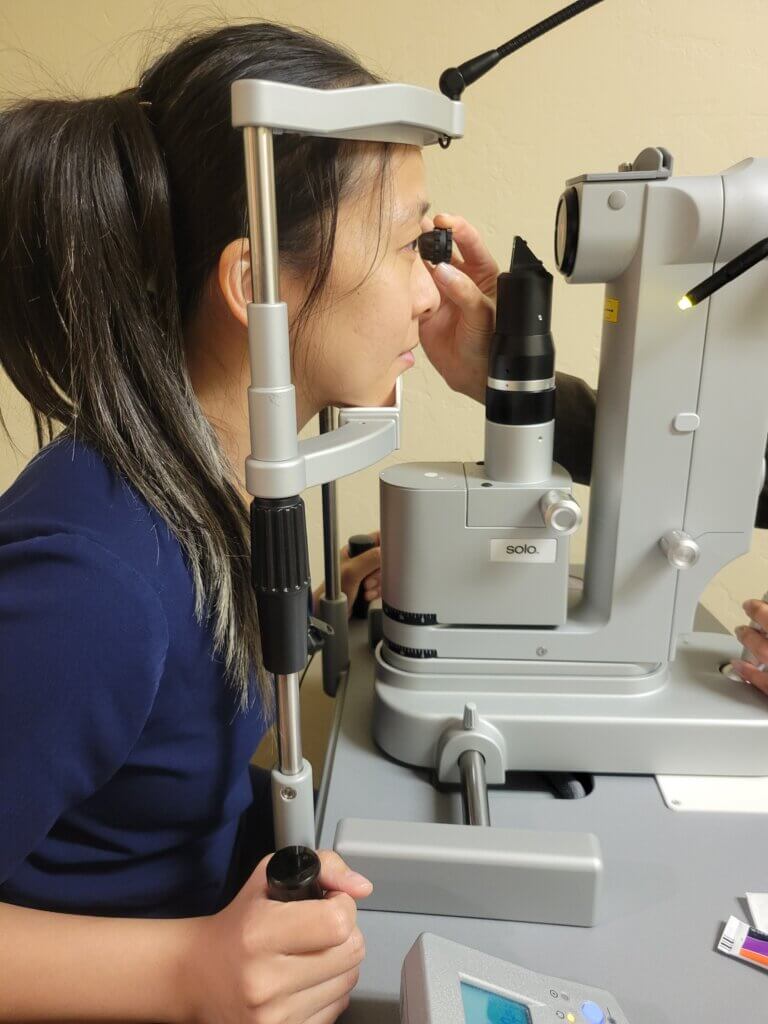If your doctor has recommended a SLT, read on to know what to expect at the visit.
1. What is selective laser trabeculoplasty (SLT)?
- A quick laser procedure that takes approximately 2-5 minutes for most patients.
- Performed to help your natural drain inside your eye work better to help lower eye pressures or to decrease fluctuations in your eye pressures.
2. Why do I need it?
- Your eye constantly produces a fluid called aqueous humor, which usually leaves the eye through a gutter-like drain in the drainage angle. This drain has a mesh-like cover called trabecular meshwork.
- If your drain does not work well for any reason, your eye pressures may rise, which can damage the optic nerve (glaucoma).


https://www.aao.org/eye-health/diseases/what-is-glaucoma#treatment
3. What will happen at a SLT visit?
- You will receive numbing eye drops. You may also receive a steroid and/or a glaucoma eye drop to decrease the risks of inflammation or high eye pressures in the eye(s) receiving the treatment.
- Your doctor will bring you back to the laser room.
- Your doctor may use a small lens to focus a small laser, and apply pulses of energy to the mesh-like cover over your internal drain. The laser does not make any holes in the eye – it just applies small amounts of light energy to the mesh-like cover.
- Most people do not feel any pain, but some may feel a slight pressure sensation.

4. What to expect after the SLT?
- Your vision will be dark for a few minutes immediately after the laser from the bright lights. This usually clears up within a few minutes.
- Your doctor will let you know how long to wait in the clinic for your eye pressure(s) to be checked again before you leave.
- If your doctor prescribes you any eye drops to use after the laser, use them as instructed.
- You will receive instructions to make a follow-up appointment to recheck your eye pressures.
5. What are the risks of SLT?
- As with any eye procedures, there are small risks associated with SLT, such as the following:
-
- You may need a repeat SLT, or additional glaucoma treatments.
- Your eye pressure may increase. You should not have eye pain, eye redness or headaches after the procedure. If you do, call our office the same day.
- You may have swelling in your retina, which would not hurt, but may distort your vision, and you may need medical treatment.
REMEMBER:
If you have a question or a concern about your vision or your eyes, call us at 520-327-3487.
